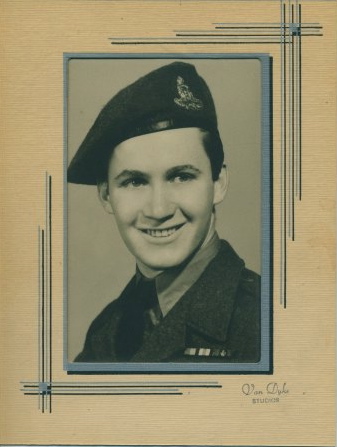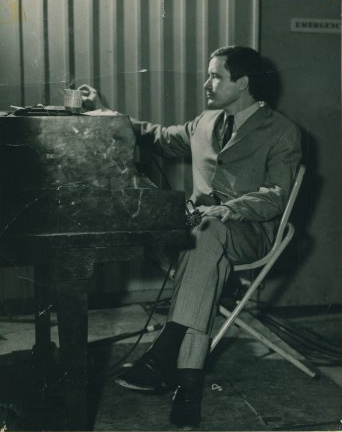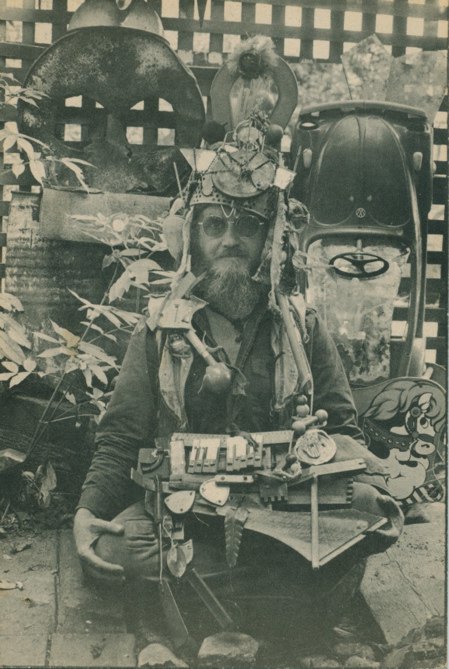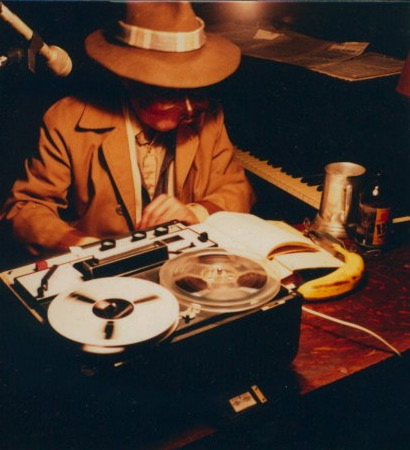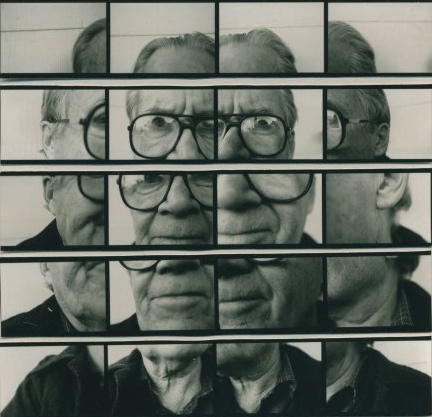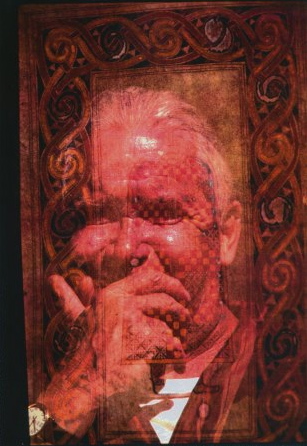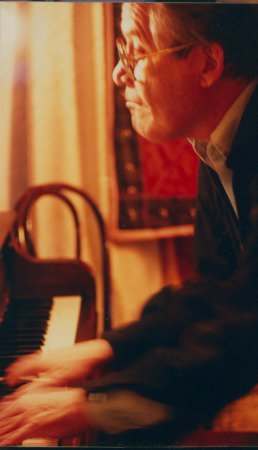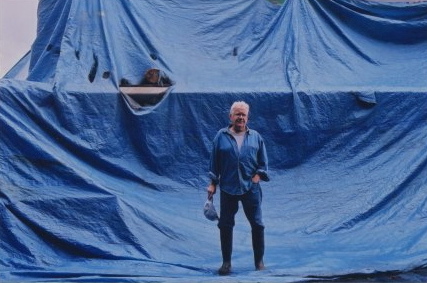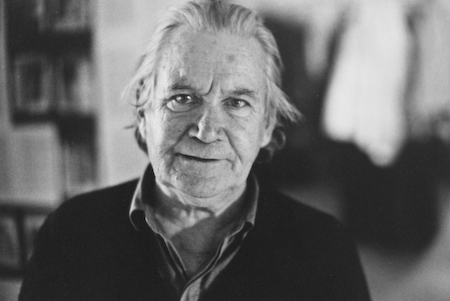ARTIST
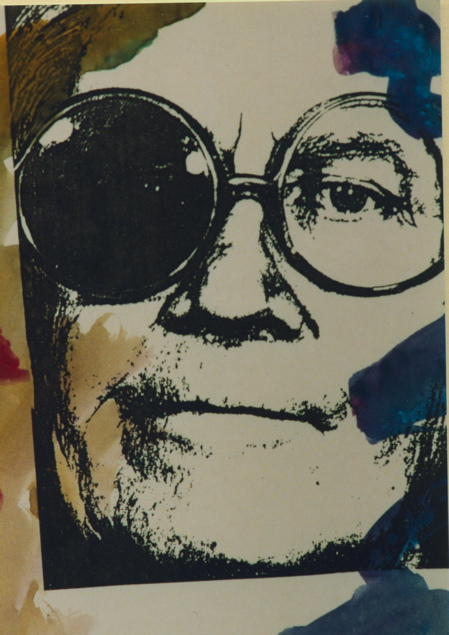
Neil, Al
"Other people called it avant garde but I never did."March 26, 1924—
INSTRUMENTS Voice, Piano
VENUES CBC Vancouver | Cellar, the
Pianist, improviser, composer, multi-media artist, author, and one of the founders of the Cellar, Vancouver's first jazz club in the 1950s, Al Neil is a gem of Vancouver history. Neil originally made a name for himself as a self-taught bebop pianist. He later embraced a convention-shattering, experimental style that may arguably have preceded that of Cecil Taylor. His artistic vocation, which spans over 50 years, had already begun during his service in World War II in the trenches of Normandy where Neil read about Dizzy Gillespie and Charlie Parker in copies of Downbeat Magazine mailed to him by his mother.
"He was a wild man. He was a wild piano player."
- Ricci Quarin
Returning home to Vancouver in the late 1940s, Al Neil frequented Kelly's, a record store on Seymour Street, where he ordered bebop records (which were nearly impossible to find in those days, he says) and met fellow budding musicians including Billy Boyle, Jimmy Johnson, and John Dawe who were doing the same. In 1956, Neil along with Dave Quarin, Jim Kilburn, Ken Hole and other local musicians opened up a jazz club in a basement at Main Street and Broadway Avenue and called it The Cellar. Within a few years, The Cellar brought in many of today's world-renowned jazz legends including Charles Mingus, Art Pepper, and Ornette Coleman. In 1958, the Al Neil Quartet and American poet Kenneth Patchen performed to a packed house in what Neil describes as "our one and only jazz poetry gig" at The Cellar. The LP recording, Kenneth Patchen reads with JAZZ IN CANADA (1959) has been recently re-released by Locust Music.
"I thought there would be a way to collage music."
- Al Neil
By the time the Cellar closed down around 1964, Al Neil was no longer interested in playing bebop. Instead, he began experimenting with what he calls "playing inside-outside" with bassist Rick Anstey and young drummer Gregg Simpson. It was Simpson's idea to use a turntable (as well as many other 'toys') that would be used generate new and interesting sounds in the trio's improvised pieces, thus creating an innovative yet unclassifiable genre of sound-collage-music that most critics would call "avant garde." Neil explains, "We looked to getting sounds coming from anywhere of any kind of type." The Al Neil Trio: Retrospective (1965-1968), a 2-disc set re-released in 2002, offers a sampling of this music.
"Whatever I'm doing belongs right here in Vancouver, B.C.."
- Al Neil
Not just a pianist, Al Neil is also a prolific visual artist. Although he has exhibited his work nationally and internationally, Neil argues that his art is inextricably linked to the West Coast. This connection is evident in his first assemblages, which were constructed in the 1960s using materials found locally at English Bay, and in his West Coast Lokas — a series of Native Art-influenced totemic assemblages exhibited at the Vancouver Art Gallery in 1972.
Neil's multimedia performances and mixed-media collages have been presented at his own Sound Gallery and Motion Studio (1966), the Vancouver Art Gallery (1968, 1972, 1989), the Art Gallery of Ontario, Toronto (1969), Museum of Modern Art, Paris (1973) and the Coburg Gallery, Vancouver (1984-7). A show of his collages, "Origins: Celtic Series," was mounted in the early 1980s at the Western Front in honour of Neil's 65th birthday.
Al Neil is also a psychedelic writer with published books, magazine articles, poetry and short stories: West Coast Lokas (1972), Changes, a novel (1975), Slammer (1980), and Origins (1989).
"He was a wild man. He was a wild piano player."
- Ricci Quarin
Returning home to Vancouver in the late 1940s, Al Neil frequented Kelly's, a record store on Seymour Street, where he ordered bebop records (which were nearly impossible to find in those days, he says) and met fellow budding musicians including Billy Boyle, Jimmy Johnson, and John Dawe who were doing the same. In 1956, Neil along with Dave Quarin, Jim Kilburn, Ken Hole and other local musicians opened up a jazz club in a basement at Main Street and Broadway Avenue and called it The Cellar. Within a few years, The Cellar brought in many of today's world-renowned jazz legends including Charles Mingus, Art Pepper, and Ornette Coleman. In 1958, the Al Neil Quartet and American poet Kenneth Patchen performed to a packed house in what Neil describes as "our one and only jazz poetry gig" at The Cellar. The LP recording, Kenneth Patchen reads with JAZZ IN CANADA (1959) has been recently re-released by Locust Music.
"I thought there would be a way to collage music."
- Al Neil
By the time the Cellar closed down around 1964, Al Neil was no longer interested in playing bebop. Instead, he began experimenting with what he calls "playing inside-outside" with bassist Rick Anstey and young drummer Gregg Simpson. It was Simpson's idea to use a turntable (as well as many other 'toys') that would be used generate new and interesting sounds in the trio's improvised pieces, thus creating an innovative yet unclassifiable genre of sound-collage-music that most critics would call "avant garde." Neil explains, "We looked to getting sounds coming from anywhere of any kind of type." The Al Neil Trio: Retrospective (1965-1968), a 2-disc set re-released in 2002, offers a sampling of this music.
"Whatever I'm doing belongs right here in Vancouver, B.C.."
- Al Neil
Not just a pianist, Al Neil is also a prolific visual artist. Although he has exhibited his work nationally and internationally, Neil argues that his art is inextricably linked to the West Coast. This connection is evident in his first assemblages, which were constructed in the 1960s using materials found locally at English Bay, and in his West Coast Lokas — a series of Native Art-influenced totemic assemblages exhibited at the Vancouver Art Gallery in 1972.
Neil's multimedia performances and mixed-media collages have been presented at his own Sound Gallery and Motion Studio (1966), the Vancouver Art Gallery (1968, 1972, 1989), the Art Gallery of Ontario, Toronto (1969), Museum of Modern Art, Paris (1973) and the Coburg Gallery, Vancouver (1984-7). A show of his collages, "Origins: Celtic Series," was mounted in the early 1980s at the Western Front in honour of Neil's 65th birthday.
Al Neil is also a psychedelic writer with published books, magazine articles, poetry and short stories: West Coast Lokas (1972), Changes, a novel (1975), Slammer (1980), and Origins (1989).
PHOTO GALLERY
Click on thumbnail for larger image
VIDEO
Al Neil Interview — Kelly's record store (part 1)
Al Neil Interview — Kelly's record store (part 2)
Al Neil Interview - The Cellar
"In Search of Innocence" (1964) - excerpt #1
"In Search of Innocence" (1964) - excerpt #2
Al Neil Interview - avant garde (part 1)
Al Neil Interview - avant garde (part 2)
Al Neil Trio performs on "Enterprise" (1967) (part 1)
Al Neil Trio performs on "Enterprise" (1967) (part 2)
Al Neil Trio performs on "Enterprise" (1967) (part 3)
DISCOGRAPHY
Al Neil Trio: Retrospective (1965-1968)
Blue Minor Records
Boot and Fog
Music Gallery Editions
1980
Kenneth Patchen Reads With Jazz in Canada
Locust Music (www.locustmusic.com)
2004
BIBLIOGRAPHY
JazzStreet Vancouver Interview
Neil, Al. Personal Interview with Eric Metcalfe. Vancouver, BC. 16 Jul 2005.
JazzStreet Vancouver Interview
Neil, Al. Personal Interview with Bill Smith. Vancouver, BC. Jun 2004.
JazzStreet Vancouver Interview
Quarin, Ricci. Personal Interview with Gavin Walker. Vancouver, BC. 1 Nov 2005.
FOR MORE INFO
Al Neil's biography on The Canadian Encyclopedia OnlineBill Smith: Al Neil - Sacred & Profane
Conversations between Al Neil and Bill Smith (Coda Magazine, 1970)
The Al Neil Project
Brunt Magazine (www.bruntmag.com)
Al Neil Interview 1972
by Rick McGrath (www.rickmcgrath.com)
